Florence O’Sullivan
 In 1670, the British frigate Carolina brought the first settlers to Carolina. Among those on board was Capt. Florence, aka Florentia, O’Sullivan, an Irish soldier of fortune who brought 16 servants with him. As deputy to Sir Peter Colleton, one of the Lords Proprietors, he was granted 2,340 acres, which encompassed most of current East Cooper. Despite the fact that a fellow officer described him as an unsavory individual, he participated in the Provincial Parliament of 1672, and two years later he was stationed on an island in Charleston Harbor, alerting the settlement of Charleston when Spanish and French warships approached. He served on the Grand Council, the Commons House of Assembly and became surveyor general of the Carolina colony. Capt. O’Sullivan died in 1683. A century later, prior to the American Revolution, Fort Sullivan was established on the site of his sentry post. Early in the war, the British Navy launched an unsuccessful attack on the fort, which was made of palmetto logs that absorbed the cannon balls.
In 1670, the British frigate Carolina brought the first settlers to Carolina. Among those on board was Capt. Florence, aka Florentia, O’Sullivan, an Irish soldier of fortune who brought 16 servants with him. As deputy to Sir Peter Colleton, one of the Lords Proprietors, he was granted 2,340 acres, which encompassed most of current East Cooper. Despite the fact that a fellow officer described him as an unsavory individual, he participated in the Provincial Parliament of 1672, and two years later he was stationed on an island in Charleston Harbor, alerting the settlement of Charleston when Spanish and French warships approached. He served on the Grand Council, the Commons House of Assembly and became surveyor general of the Carolina colony. Capt. O’Sullivan died in 1683. A century later, prior to the American Revolution, Fort Sullivan was established on the site of his sentry post. Early in the war, the British Navy launched an unsuccessful attack on the fort, which was made of palmetto logs that absorbed the cannon balls.
David Maybank II
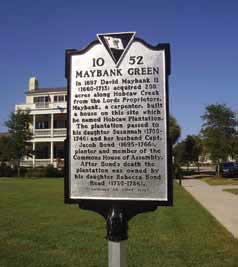 David Maybank II was born in 1660 and arrived in the Carolina colony in the 1670s. He purchased 200 acres in 1698 from the Lords Proprietors near the mouth of the Wando River along Wackendaw Creek, which was later named Hobcaw Creek. His property was adjacent to the Shipyard Tract in the Wando Neck region. The Colonial ship-building business thrived in this area due to an abundance of live oak and long needle pine trees. Maybank was a carpenter by trade and held various positions in Charleston. He was appointed commissioner for fortifying Charleston and oversaw the construction of the city’s defensive walls. In addition to his Charleston residence, he built a house on Hobcaw Creek, which he called Hobcaw Plantation. When he died in 1713, he bequeathed “unto Susannah my beloved wife all my plantation wherein I now dwell …” Upon Susannah’s death three years later, the property passed to her daughter, Susannah, wife of Jacob Bond.
David Maybank II was born in 1660 and arrived in the Carolina colony in the 1670s. He purchased 200 acres in 1698 from the Lords Proprietors near the mouth of the Wando River along Wackendaw Creek, which was later named Hobcaw Creek. His property was adjacent to the Shipyard Tract in the Wando Neck region. The Colonial ship-building business thrived in this area due to an abundance of live oak and long needle pine trees. Maybank was a carpenter by trade and held various positions in Charleston. He was appointed commissioner for fortifying Charleston and oversaw the construction of the city’s defensive walls. In addition to his Charleston residence, he built a house on Hobcaw Creek, which he called Hobcaw Plantation. When he died in 1713, he bequeathed “unto Susannah my beloved wife all my plantation wherein I now dwell …” Upon Susannah’s death three years later, the property passed to her daughter, Susannah, wife of Jacob Bond.
Jacob Bond
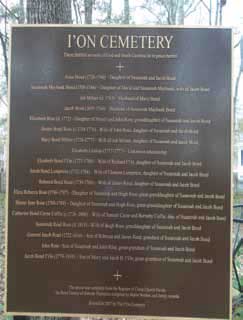 In 1715, Capt. Jacob Bond, a planter and mariner, married Susannah Maybank II, who inherited Hobcaw Plantation from her mother a year later. Bond was born in Cornwall, England, in 1695, but it is unknown when he arrived in the Carolina colony. He owned more than 4,000 acres in Granville and Craven counties, but he and Susannah made their home at Hobcaw Plantation, where they raised eight daughters and one son. Possibly because the home was near the shipyards, many of their daughters married seafaring men or ship builders. Bond was active in the Christ Parish Church, where he served as a vestry man. He was a justice in the Commission of Peace for a number of years and also was appointed to the General Assembly. When his wife died in 1746, she willed Hobcaw Plantation to her daughter, Rebecca Read, but Capt. Bond continued to live on the plantation until his death 20 years later. Both Capt. Bond and Susannah are buried in the family cemetery, located in the I’On community. David and Susannah Maybank probably are buried there as well.
In 1715, Capt. Jacob Bond, a planter and mariner, married Susannah Maybank II, who inherited Hobcaw Plantation from her mother a year later. Bond was born in Cornwall, England, in 1695, but it is unknown when he arrived in the Carolina colony. He owned more than 4,000 acres in Granville and Craven counties, but he and Susannah made their home at Hobcaw Plantation, where they raised eight daughters and one son. Possibly because the home was near the shipyards, many of their daughters married seafaring men or ship builders. Bond was active in the Christ Parish Church, where he served as a vestry man. He was a justice in the Commission of Peace for a number of years and also was appointed to the General Assembly. When his wife died in 1746, she willed Hobcaw Plantation to her daughter, Rebecca Read, but Capt. Bond continued to live on the plantation until his death 20 years later. Both Capt. Bond and Susannah are buried in the family cemetery, located in the I’On community. David and Susannah Maybank probably are buried there as well.
Jacob Motte
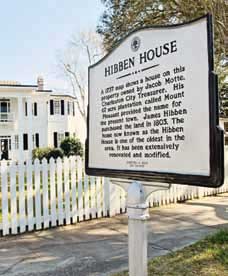 Jacob Motte was born in 1700 in Dublin, Ireland; his father, the Dutch counsel, was descended from the Marquis de la Motte. The family arrived in Charleston with other Huguenots and, by 1713, Motte was serving an apprenticeship in Charleston. While still in his 20s, he owned a store on Tradd Street and a wharf at the end of the street. One of the wealthiest merchants in Charleston, he was active in many organizations and was elected twice to the Royal Assembly. He succeeded Gabriel Manigault as public treasurer for the colony, a position he apparently was ill-suited for – he was found to have misappropriated funds. Despite his money troubles, he managed to purchase approximately 60 acres in Christ Church Parish on Charleston Harbor in the 1750s. In 1759, Motte built a house on a rise overlooking the harbor and named the estate Mount Pleasant. He had 19 children by his first wife and two by his second. One of his daughters-in-law, Rebecca Brewton Motte, who was married to his son, Jacob, was a heroine of the Revolutionary War. He died a wealthy man in 1770. In addition to his Mount Pleasant Plantation, he had a town house in Charleston and 20 slaves. He is buried in St. Philip’s churchyard.
Jacob Motte was born in 1700 in Dublin, Ireland; his father, the Dutch counsel, was descended from the Marquis de la Motte. The family arrived in Charleston with other Huguenots and, by 1713, Motte was serving an apprenticeship in Charleston. While still in his 20s, he owned a store on Tradd Street and a wharf at the end of the street. One of the wealthiest merchants in Charleston, he was active in many organizations and was elected twice to the Royal Assembly. He succeeded Gabriel Manigault as public treasurer for the colony, a position he apparently was ill-suited for – he was found to have misappropriated funds. Despite his money troubles, he managed to purchase approximately 60 acres in Christ Church Parish on Charleston Harbor in the 1750s. In 1759, Motte built a house on a rise overlooking the harbor and named the estate Mount Pleasant. He had 19 children by his first wife and two by his second. One of his daughters-in-law, Rebecca Brewton Motte, who was married to his son, Jacob, was a heroine of the Revolutionary War. He died a wealthy man in 1770. In addition to his Mount Pleasant Plantation, he had a town house in Charleston and 20 slaves. He is buried in St. Philip’s churchyard.
Andrew Hibben
As a young man, Andrew Hibben immigrated from Kent, England, and arrived in Charleston in 1763 with the evangelist Rev. George Whitefield. A year later, Hibben advertised his jewelry and watch-making shop on Tradd Street and the following year moved to Broad Street. When he married a wealthy young window, Elizabeth Barksdale Wingood, in 1766, he gave up his business and became a planter in Christ Church Parish, where the Barksdales were prominent landowners. Hibben named his plantation Seaside and subsequently sold it to John Hamlin, as noted on Robert Mills’ survey of 1825. In 1770, Hibben purchased a tract of land south of Shem Creek and established a ferry service to Charleston. He died in 1784.
James Hibben
 Following the death of his father, Andrew Hibben, James Hibben continued and expanded the ferry service between Charleston and Haddrell’s Point. As Andrew’s only son, he also inherited his plantation and, in 1803, purchased the house that Jacob Motte built, which still bears his name. He also purchased Motte’s lands, known as Mount Pleasant. He divided the land into 35 lots and gave a lot to each of his surviving 10 children. The five streets laid out were Beach, Bennett, Whilden, Boundary and Venning. Hibben was politically active. He was elected to the General Assembly for Christ Church Parish from 1795 to 1799 and state senator from 1800 to 1819. His son Andrew followed him into the political arena. A trustee for South Carolina College, Hibben was a captain in the War of 1812. He died in 1835 and is buried alongside his wife, Sarah Wells, in Cook’s Old Field Cemetery, a family burial ground located off of Rifle Range Road.
Following the death of his father, Andrew Hibben, James Hibben continued and expanded the ferry service between Charleston and Haddrell’s Point. As Andrew’s only son, he also inherited his plantation and, in 1803, purchased the house that Jacob Motte built, which still bears his name. He also purchased Motte’s lands, known as Mount Pleasant. He divided the land into 35 lots and gave a lot to each of his surviving 10 children. The five streets laid out were Beach, Bennett, Whilden, Boundary and Venning. Hibben was politically active. He was elected to the General Assembly for Christ Church Parish from 1795 to 1799 and state senator from 1800 to 1819. His son Andrew followed him into the political arena. A trustee for South Carolina College, Hibben was a captain in the War of 1812. He died in 1835 and is buried alongside his wife, Sarah Wells, in Cook’s Old Field Cemetery, a family burial ground located off of Rifle Range Road.
Jacob Bond I’on
 Apparently Hobcaw Plantation was never occupied following Jacob Bond’s death in 1766. However, the land passed to Bond’s daughter, Rebecca Read, and remained in the Read family until it was sold in 1846. The home must have been substantial, because Jacob Bond I’On entertained President James Monroe and Secretary of State John C. Calhoun at the family’s Hobcaw Plantation during their visit to the Lowcountry in 1819. I’On and Calhoun were roommates at Yale. Remnants of the family cemetery, all that remain today, are located in the I’On community. In 1857, I’On erected a large Victorian monument in the family cemetery which was restored by the developer of I’On in 1996. The old homestead no longer exists. Jacob Bond I’On and his twin sister were born in 1782. He served in the War of 1812 and advertised for deserters as a captain of the 2nd Regiment of Artillery and commanding officer of both Fort Moultrie and Castle Pinckney. He was later known as “Colonel.” He served as a state senator from Christ Church Parish from 1820 until 1830. He was elected intendant (mayor) of Moultrieville in 1834, a settlement that grew up around the fort that was completed in 1811. Moultrieville was incorporated in 1817 and consisted of approximately 200 homes, mainly for summer residents from Charleston. These homes were destroyed by the Union bombardment of the fort during the Civil War. Accounts of the time describe I’On as a very large man who enjoyed entertaining the soldiers stationed at nearby Fort Moultrie. At the time of his death, his home was described as “comfortable and commodious … situated on Sullivan’s Island … contains six rooms, a pantry and storeroom; and … good servants’ accommodation, carriage house and stable …” Across the street from his home was “the elegant mansion of General Pinckney.” Susannah Smith Miles tells of an account by I’On’s neighbor, who stated that just prior to his death in 1859, I’On’s leg fell off. Given I’On’s size, it is probable that he was a diabetic. He is buried in the family cemetery. Today a street in Sullivan’s Island bears his name, as does the I’On community, where a historic marker commemorates his life.
Apparently Hobcaw Plantation was never occupied following Jacob Bond’s death in 1766. However, the land passed to Bond’s daughter, Rebecca Read, and remained in the Read family until it was sold in 1846. The home must have been substantial, because Jacob Bond I’On entertained President James Monroe and Secretary of State John C. Calhoun at the family’s Hobcaw Plantation during their visit to the Lowcountry in 1819. I’On and Calhoun were roommates at Yale. Remnants of the family cemetery, all that remain today, are located in the I’On community. In 1857, I’On erected a large Victorian monument in the family cemetery which was restored by the developer of I’On in 1996. The old homestead no longer exists. Jacob Bond I’On and his twin sister were born in 1782. He served in the War of 1812 and advertised for deserters as a captain of the 2nd Regiment of Artillery and commanding officer of both Fort Moultrie and Castle Pinckney. He was later known as “Colonel.” He served as a state senator from Christ Church Parish from 1820 until 1830. He was elected intendant (mayor) of Moultrieville in 1834, a settlement that grew up around the fort that was completed in 1811. Moultrieville was incorporated in 1817 and consisted of approximately 200 homes, mainly for summer residents from Charleston. These homes were destroyed by the Union bombardment of the fort during the Civil War. Accounts of the time describe I’On as a very large man who enjoyed entertaining the soldiers stationed at nearby Fort Moultrie. At the time of his death, his home was described as “comfortable and commodious … situated on Sullivan’s Island … contains six rooms, a pantry and storeroom; and … good servants’ accommodation, carriage house and stable …” Across the street from his home was “the elegant mansion of General Pinckney.” Susannah Smith Miles tells of an account by I’On’s neighbor, who stated that just prior to his death in 1859, I’On’s leg fell off. Given I’On’s size, it is probable that he was a diabetic. He is buried in the family cemetery. Today a street in Sullivan’s Island bears his name, as does the I’On community, where a historic marker commemorates his life.
Influential Icons of East Cooper, Part 2
Following the Civil War, Christ Church Parish and the small Village of Mount Pleasant lay in ruins. With no slave workforce, the large plantations were deserted. The summer homes of the wealthy in the Village were abandoned. The remaining residents farmed, fished and shrimped to survive. Small businesses were established and slowly the town thrived. The biggest change came following the opening of the Cooper River Bridge in 1929. Residents turned to catering to the tourists who passed through town on their way to Sullivan’s Island and the Isle of Palms.
Major John Marshall Whilden – “The Boy Major”
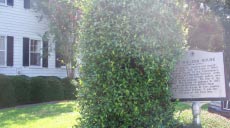 John Marshall Whilden was one of five brothers who fought for the Confederacy; all were the sons of Elias Whilden, Mount Pleasant intendant (mayor) from 1857 to 1858 and whose stately home still stands at 226 Bennett St. He was a member of the Citadel Class of 1864 and the gun commander of #1 Gun Battery stationed on Morris Island, which fired on the Union “Star of the West” in 1861 while it was attempting to supply Union troops on Fort Sumter. This was the shot that began the Civil War.
John Marshall Whilden was one of five brothers who fought for the Confederacy; all were the sons of Elias Whilden, Mount Pleasant intendant (mayor) from 1857 to 1858 and whose stately home still stands at 226 Bennett St. He was a member of the Citadel Class of 1864 and the gun commander of #1 Gun Battery stationed on Morris Island, which fired on the Union “Star of the West” in 1861 while it was attempting to supply Union troops on Fort Sumter. This was the shot that began the Civil War.
At the age of 23, Whilden was promoted to major and in charge of the Coast Rangers of the 23rd South Carolina Infantry at the Second Battle of Manassas in Virginia. He personally led his regiment on four charges and was killed in action on Aug. 30, 1862, still carrying the battle flag.
When federal troops occupied Charleston and surrounded area, the Whilden home served as Union headquarters. Another brother also was killed in the war; the two of them were among approximately 17,000 South Carolina men lost fighting for the Confederacy.
Cornelia Hancock
 Born a Quaker in 1840 in Hancock’s Bridge, New Jersey, Cornelia Hancock was a woman ahead of her time. During the Civil War, she accompanied her brother-in-law, a doctor, to the Gettysburg battlefield, where she volunteered as a Union Army nurse but was rejected by Dorothea Dix because of her youth and good looks. Undaunted, she persevered and served both at Gettysburg and Petersburg.
Born a Quaker in 1840 in Hancock’s Bridge, New Jersey, Cornelia Hancock was a woman ahead of her time. During the Civil War, she accompanied her brother-in-law, a doctor, to the Gettysburg battlefield, where she volunteered as a Union Army nurse but was rejected by Dorothea Dix because of her youth and good looks. Undaunted, she persevered and served both at Gettysburg and Petersburg.
Following the war, Hancock was sent to Mount Pleasant as a missionary by the Philadelphia Friends Association for the Aid and Elevation of Freedmen. She established a school for 50 children of former slaves in the old Presbyterian Church, which she described as “dilapidated.”
She later moved into a home in the village that was large enough to act as both a school and her residence. While still under federal rule, the town donated a lot on which to build a two-story schoolhouse at the corner of King and Common streets. The school, built with funds from the Freedman’s Bureau, was named for Henry Laing of Philadelphia who provided money to support the school. For the next 10 years, Cornelia served as Laing School principal before returning to Philadelphia, where she helped create the Society for Organizing Charity and the Children’s Aid Society of Pennsylvania. She died in Atlantic City, New Jersey, in 1927, at the age of 87.
In 1940 the Laing School became part of the public school system, the first accredited black school in South Carolina.
Her letters, published in 1965, Cornelia expressed her contempt for the former rebels: “I would like to … put all the Secesh (Secessionists) in the poorhouse and keep them their till they die.” Her mother cautioned her to be “more prudent.”
Carlyle McKinley
While still in his early teens, Carlyle McKinley fought for the Confederate cause in the defense of Atlanta. Born in Newman, Georgia, in 1848, McKinley graduated from the University of Georgia prior to studying at the Presbyterian Theological Seminary in Columbia, South Carolina. Rather than pursuing a ministry placement, the talented poet, writer and scholar decided on a career in journalism and was hired to head the Columbia bureau of the Charleston News and Courier.
On the fateful night of Aug. 31, 1886, McKinley, who resided in Mount Pleasant and served as chief editorial writer for the News and Courier, wrote a firsthand account of the effect of the earthquake both in the Village and on Sullivan’s island. He described how first the tremors were felt and later the fissures appeared, along with the strong odor of sulphur. Damage in Mount Pleasant was less than that in Charleston since most of its structures were made of wood, which sway when the ground moves, as opposed to brick buildings, which tend to topple. There were reports of fallen chimneys in Mount Pleasant. At this time, the population of Mount Pleasant was slightly more than 700 and almost evenly divided between whites and blacks.
McKinley purchased the former summer cottage of the von Kolnitz family, which overlooked the harbor. Upon McKinley’s death in 1904, the home was sold and then, in 1928, purchased by Mr. and Mrs. Dana Osgood of Massachusetts. The Osgoods created a popular tourist destination overlooking the harbor and featuring azaleas and camellias. They playfully named their gardens “Pierates Cruze.” Subsequently, the land was sold and divided into lots adjacent to Alhambra Hall.
Louis Frederick Klipstein
If ever there was a fish out of water, it was Louise Klipstein. Born in 1813 in Virginia, he was the grandson of a Hessian surgeon who served in the American Revolution and then settled in Virginia. Klipstein studied at Union Theological Seminary before graduating from Hampden-Sydney College in Virginia, where he became interested in language, especially Anglo-Saxon. For health reasons, he came to South Carolina and was hired as a tutor by Mrs. Rebekah DuPre Jerman of Echaw on the Santee River. He married her daughter, Allston Cahusac Jerman, and his sister, Cornelia, who came with him to South Carolina, married Edward DuPre Jerman. The bride’s mother gave the couple Cedar Grove Plantation on Shem Creek as a wedding present. The property had a long history and a grand old plantation house; today, Cooper Estates comprises some of the lands. It was here that Klipstein pursued his passion and began writing a series textbooks first published in 1848 on the Anglo-Saxon language. Unfortunately, the books did not bring financial success, and he worked to re-cultivate Cedar Grove by introducing irrigation ditches. During this process, he uncovered many relics, including mastodon fragments. This finding was excitedly reported in the local Charleston newspaper in 1859.
Disillusioned and bitter, Klipstein began drinking. His wife sold the plantation and she and their son moved to Florida. He lived as a recluse in a shanty in Remley’s Point and walked the streets begging for food; eventually he found his way to Florida, where he died in 1878.
While never gaining the fame or fortune in the United States, an honorary Ph.D. was bestowed upon him 1854 from the University of Gleissen in Germany. In an 1893 publication, he was cited, along with Thomas Jefferson, as a pioneer “in the historical study of English,” as well as, “One of most brilliant men in America.”
Robert Venning Royall
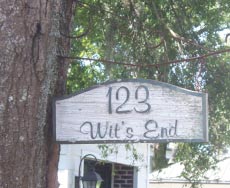 Robert Venning Royall’s name alone bears witness that he has deep roots in Mount Pleasant, despite the fact that he was born in Florida in 1854. His mother was a Venning, and he spent most of his life in the Old Village from the age of 17 on. He graduated from Wake Forest in North Carolina and at one point served as town surveyor. He first taught and then was principal of the High School of Charleston, an all male school at the time that was located in the former mansion of Judge King on the corner of George and Meeting streets. A “most beloved teacher,” he was affectionately known as “Uncle Pete.” For 36 years, he rode the ferry across the harbor each day between Charleston and Mount Pleasant. He also served as Mount Pleasant mayor from 1898 until 1914 – tied with G. Magart Darby, 1960 to 1976, for longest reign.
Robert Venning Royall’s name alone bears witness that he has deep roots in Mount Pleasant, despite the fact that he was born in Florida in 1854. His mother was a Venning, and he spent most of his life in the Old Village from the age of 17 on. He graduated from Wake Forest in North Carolina and at one point served as town surveyor. He first taught and then was principal of the High School of Charleston, an all male school at the time that was located in the former mansion of Judge King on the corner of George and Meeting streets. A “most beloved teacher,” he was affectionately known as “Uncle Pete.” For 36 years, he rode the ferry across the harbor each day between Charleston and Mount Pleasant. He also served as Mount Pleasant mayor from 1898 until 1914 – tied with G. Magart Darby, 1960 to 1976, for longest reign.
Royall married a local woman, Sallie DuPre, from another longtime local family. They had three sons and three daughters, who also married into local families: the McIves, the Trotts and the Gregories. His daughter, Petrona McIver, wrote the definitive history of Mount Pleasant in 1960 and ironically mentioned little about her father’s many accomplishments.
The family home, perched on a bluff overlooking the harbor at 123 Hibben St., was built following the Civil War and has been described as “Queen Anne meets New England Cape Cod.” It bears the delightful name “Wit’s End.”
Royall died in 1935, at the age of 81. Despite being a Baptist, he is buried in Christ Church burial ground. Common Street was renamed Royall Avenue in his honor.
Robert Muirhead
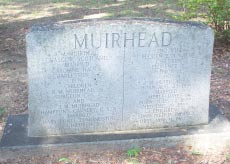 Born in 1811 in Glasgow, Scotland, by the mid-1800s Robert Muirhead was a man of means. He purchased the old Prichard’s Shipyard property, also known as Hobcaw (Plantation) in Christ Church Parish in 1853 and the census of 1860 indicates that he had 31 slaves. He achieved fame for his asparagus and his drainage system. The property also had a spring that supplied 60,000 gallons of water daily, by ship, to the Naval Station at Port Royal.
Born in 1811 in Glasgow, Scotland, by the mid-1800s Robert Muirhead was a man of means. He purchased the old Prichard’s Shipyard property, also known as Hobcaw (Plantation) in Christ Church Parish in 1853 and the census of 1860 indicates that he had 31 slaves. He achieved fame for his asparagus and his drainage system. The property also had a spring that supplied 60,000 gallons of water daily, by ship, to the Naval Station at Port Royal.
Little is known about his personal life. In 1868, he filed for bankruptcy in Charleston County and the 1870 census shows him living with his wife, Caroline Hauck, and their cook, Suzanna White, in Chester, South Carolina. He and Caroline had two sons, R.M Junior and J. M., both of whom served in the Civil War. There sometimes is confusion between the two R.M.s. Local lure tells of a Major Muirhead who was kidnapped by black Yankee soldiers. His execution was halted when he made the Grand Mason distress sign, which was recognized by one of the enemy officers, and his life was spared. It is unknown if this was father or son.
Muirhead was buried in the family cemetery at Hobcaw, but the Muirhead family remains were later moved to Christ Church graveyard, and new headstone was installed in the 1960s. Hobcaw was eventually purchased by Harry L. Erckman, brother of Mayor William Erckman
William L. Erckman
When Mayor T. G. McCants died in 1933, William L. Erckman, the mayor pro-tem, succeeded him and then continued to serve until 1946. During his term of office, the tiny village of Mount Pleasant saw many changes. A modern water treatment plant, initiated by Mayor McCants, was completed and served 179 residents. This event warranted a large celebration in Alhambra Park. A sewer system was completed in 1942. A new jail was constructed, as was an expanded fire department. Streets were paved and sidewalks were installed. But Erckman’s crowning achievement was the creation of Alhambra Hall. The area was known as Hort’s Grove but was developed in 1847 as Hilliardsville by Charles Jungot and Oliver Hilliard. It included a picnic ground for daytrippers coming by ferry from Charleston. Once the recreational area on Isle of Palms opened in the early 1900s, this site fell out of favor and the octagonal hall burned. The town acquired the land as well as the land on which the Hog Island (Patriots Point) ferry terminal was located. As part of a federal Work Projects Administration project, the town utilized the material from the old terminal and built the hall to serve as a community center. The plans were designed by local architect Harold G. Taltum. The hall opened in 1937 with a grand celebration featuring local celebrities, including Judge George L. von Kolnitz.
Erckman was born in Charleston in 1875, the son of a German immigrant. He was educated in Charleston schools and worked for South Carolina Electric and Gas. He married the former Etta Coleman – from another local family – and they had a son and a daughter. He served as a deacon and Sunday School superintendent at Mount Pleasant Presbyterian Church, where his funeral was held in 1957. He was buried in the Mount Pleasant Lutheran Cemetery.
George L. von Kolnitz
In 1936, George von Kolnitz was the first judge appointed to the Charleston County Court of Domestic Relations, where he served for 12 years. Born in Charleston in 1868, he attended the High School of Charleston and The Citadel, then graduated from the College of Charleston in 1888. A year later, he was admitted to the South Carolina Bar and practiced law for many years. He also served as president of the Charleston Bar Association.
Von Kolnitz was a member of the South Carolina House of Representatives from 1890 until 1894, then a state senator from 1902 until 1906 and a representative again from 1906 until 1908.
He married Sarah Holmes and the couple had two daughters. They made their home in Mount Pleasant, where both were active in local events; he was a popular speaker at many town celebrations. He died in 1948 at the age of 80 and is buried in Magnolia Cemetery.
Edmund Jenkins
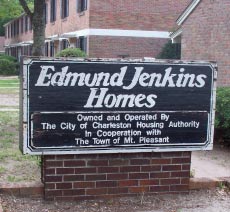 In 2006, a historic marker was installed to honor Edmund Jenkins, Mount Pleasant’s first black town marshal. He was appointed in 1920 after having first served as assistant marshal and assistant police chief and continued to serve until 1927. He earned the respect of both white and black residents at a time when segregation was the norm and the population was still evenly divided among its approximately 1,400 residents. When he retired, he received a pension of $25 per month. Jenkins was also a veteran of the World War I.
In 2006, a historic marker was installed to honor Edmund Jenkins, Mount Pleasant’s first black town marshal. He was appointed in 1920 after having first served as assistant marshal and assistant police chief and continued to serve until 1927. He earned the respect of both white and black residents at a time when segregation was the norm and the population was still evenly divided among its approximately 1,400 residents. When he retired, he received a pension of $25 per month. Jenkins was also a veteran of the World War I.
The marker also commemorates the Ocean Grove Cemetery, which was established in 1883 along Simmons Street. Jenkins was buried there in 1930. The cemetery is divided by Hallelujah Lane, and St. Paul’s Lutheran Church owns the adjoining section.
When a public housing complex was built in 1952, it was named in his memory.
Robert Scanlon
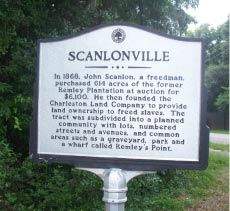 Following the Civil War, people who once were slaves joined together to purchase old plantation lands. In 1868, Robert Scanlon, a former slave and freedman carpenter, was the highest bidder on 614 acres of land in Christ Church Parish, formerly owned by Paul Remley and known as Remley’s Point. He organized the Charleston Land Company to sell shares in a planned community called Scanlonville. A plat drawn in 1870 shows town blocks measuring 900 feet east-west and 400 feet north-south and consisting of 18 plots, 100 feet wide by 200 feet deep. The roadways on the east-west axis were numbered avenues, while those running in a north-south direction were numbered streets. Amenities included a park and wharf from which to ship produce grown nearby to the Charleston market. An existing graveyard was to remain. Approximately 100 men purchased shares at $100 each, paid off at $1 a month. No homes were built and shareholders sold the property in 1930 for $5,500.
Following the Civil War, people who once were slaves joined together to purchase old plantation lands. In 1868, Robert Scanlon, a former slave and freedman carpenter, was the highest bidder on 614 acres of land in Christ Church Parish, formerly owned by Paul Remley and known as Remley’s Point. He organized the Charleston Land Company to sell shares in a planned community called Scanlonville. A plat drawn in 1870 shows town blocks measuring 900 feet east-west and 400 feet north-south and consisting of 18 plots, 100 feet wide by 200 feet deep. The roadways on the east-west axis were numbered avenues, while those running in a north-south direction were numbered streets. Amenities included a park and wharf from which to ship produce grown nearby to the Charleston market. An existing graveyard was to remain. Approximately 100 men purchased shares at $100 each, paid off at $1 a month. No homes were built and shareholders sold the property in 1930 for $5,500.
When the Cooper River Bridge opened in 1929, the Isle of Palms as a resort for whites. A year later, Riverside Beach was opened for blacks. It became a popular resort, especially during the 1950s and 1960s, when popular artists such as Count Basie, Louie Armstrong and Duke Ellington performed there.
Little is known of the personal life of Robert Scanlon. Censuses mention a Robert Scanlon, a tomato and cotton farmer in 1910 and a carpenter in 1930. He lived on Mathis Ferry Road. But this may have been his son, since he was born in 1880s – but he listed his father as Frank Scanlon.
Robert Simmons (Simons)
Berkeley County has appeared, disappeared and changed its borders over its long history. In 1882, it was re-established and Mount Pleasant was named the county seat. The first state senator elected from the new county was Robert Simmons, who was born in 1850 in Colleton County and schooled on St. Helena’s Island. He was a farmer on Wadmalaw Island but became active in the Republican Party and was elected as a representative from Charleston in 1876. However, he was never seated due to a “House” controversy. He served for two terms, from 1882 to 1885, as Berkeley’s state senator. Previously, in 1865, a Berkeley election district was created and William Pinckney Shingler was state senator, but this district was abolished in 1868. Earlier, Mount Pleasant was represented as Christ Church Parish.
A new county courthouse was built in 1884 on part of the 50 areas previously set aside by Jonathon Scott when he laid out Greenwich Village in 1776. Mount Pleasant returned to Charleston County in 1895, and Moncks Corner became the Berkeley County seat. The courthouse had many owners and various uses over the next 75 years, including that of a school and a church. In 1974, the town of Mount Pleasant purchased the building and it became Town Hall. Following Hurricane Hugo in 1989, Town Hall was relocated to its present location. Today, the old courthouse, named for former Mayor G.M. Darby in 1991, functions as administrative offices.
Simmons was an unsuccessful candidate for Congress in 1888. Not much is known of his personal life, but one account lists him as a farmer in Mount Pleasant. The name Simmons is common among local African-Americans.
Influential Icons of East Cooper, Part 3
The end of World War II saw the emergence of strong women throughout the nation, and Mount Pleasant was no exception. Women assumed influential new roles in education and also recognized the importance of recording the past. The dramatic growth of Mount Pleasant following World War II presented new challenges and produced trailblazers to lead the town to its destiny as a major South Carolina urban center.
Dr. Anne King Gregorie
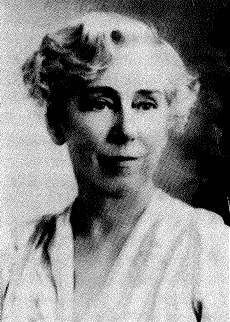 Today the accomplishments of Dr. Anne King Gregorie would be admirable but not unusual. However, for a woman born in the rural South just following Reconstruction, her achievements are extraordinary. Her grandfather, Ferdinand Gregrorie, was an early landowner in Christ Church Parish and owned Myrtle Grove, a plantation located along present day Rifle Range Road. He also served as intendant (mayor) of Mount Pleasant and had the misfortune to have to surrender the town to union troops in 1865. Her father, also named Ferdinand, married Anne Palmer Porcher, a member of another local landowning family. At the time of her birth in 1887, the family was living in Savannah, where her father was managing a plantation. When she was 6, the family moved back to Christ Church Parish and lived at Oakland, the Porcher family plantation. At the age of 16, she earned a scholarship to Winthrop College and graduated three years later in 1906 with a bachelor of arts degree.
Today the accomplishments of Dr. Anne King Gregorie would be admirable but not unusual. However, for a woman born in the rural South just following Reconstruction, her achievements are extraordinary. Her grandfather, Ferdinand Gregrorie, was an early landowner in Christ Church Parish and owned Myrtle Grove, a plantation located along present day Rifle Range Road. He also served as intendant (mayor) of Mount Pleasant and had the misfortune to have to surrender the town to union troops in 1865. Her father, also named Ferdinand, married Anne Palmer Porcher, a member of another local landowning family. At the time of her birth in 1887, the family was living in Savannah, where her father was managing a plantation. When she was 6, the family moved back to Christ Church Parish and lived at Oakland, the Porcher family plantation. At the age of 16, she earned a scholarship to Winthrop College and graduated three years later in 1906 with a bachelor of arts degree.
For the next 11 years, she taught school but returned to Christ Church Parish upon the death of her mother in 1918 to care for her father. It was during this time that she developed a keen interest in history. Determined to pursue her new avocation, she enrolled at the University of South Carolina and obtained a master’s degree. She also took graduate courses at the University of Wisconsin and returned to USC to teach while completing her dissertation on Thomas Sumter. She was the first woman to receive a doctorate in history from USC. She taught history at both Arkansas and Alabama colleges. During the Depression, she again returned to Christ Church Parish and compiled historical records for the Works Progress Administration.
For the remainder of her life, her writings concentrated on state and local history. She served as director of the South Carolina division of National Historical Records Survey from 1936 until 1941. She contributed and edited The South Carolina Historical Magazine from 1948 until 1958 and then served as president of the South Carolina Historical Association until 1959. She completed “Christ Church Parish, 1706-1959,” just prior to her death on Dec. 4, 1960. She is buried in the old churchyard of Christ Church.
Jennie Verdie Edmondston Moore
 Today, a Mount Pleasant grammar school bears the name of “Jennie Moore.” Moore was born in Mount Pleasant on Oct. 21, 1882, one of five children of William Edmondston and Sarah Eliza Venning Edmondston. The family lived on Bennett Street, and she attended Mount Pleasant Academy. In June 1904, she married William Moultrie Moore, and the couple made their home at 203 King St. and had one son, Rev. William Moultrie Moore Jr.
Today, a Mount Pleasant grammar school bears the name of “Jennie Moore.” Moore was born in Mount Pleasant on Oct. 21, 1882, one of five children of William Edmondston and Sarah Eliza Venning Edmondston. The family lived on Bennett Street, and she attended Mount Pleasant Academy. In June 1904, she married William Moultrie Moore, and the couple made their home at 203 King St. and had one son, Rev. William Moultrie Moore Jr.
Mrs. Moore served as secretary for the Moultrie School District for 20 years. During this time, she was a proponent for better schools for the black residents of East Cooper. During her lifetime, she saw her “dreams come true,” with the construction of a new elementary school and the new Laing High School in the 1950s. The principals of the of the former black schools – Gregorie, Seven Mile, Four Mile, Phillips and Long Point schools – now under one school providing for 650 students, petitioned that the new school be named in her honor, citing: “… an individual who … has rendered the most unselfish, untiring and sincere efforts towards the educational, social and cultural growth of the Negro youth.” Jennie Moore Elementary opened in 1956 on Hamlin Road, and, in 2002, became Jennie Moore School for Creative Arts, a partial magnet school. Currently classes are held in the old Wando High School building. A new school is scheduled to open in August 2015.
Mrs. Moore died on March 26, 1971, in Raleigh North Carolina, where her son was serving as suffragan bishop of the Episcopal Diocese of North Carolina. She is buried in Christ Church Cemetery.
Mary “Mamie” Pinckney Whitesides
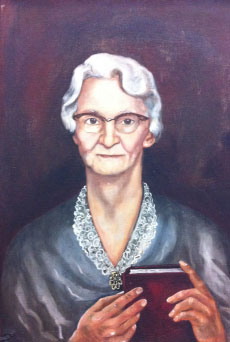 Miss Mamie” was born on Whitesides Planation in Christ Church on May 3, 1884, the daughter of John Whitesides and Abagail Lagare Whitesides. Her father was listed as a farmer on the 1880 Census. The 1920 Census lists her as a teacher living on Bennett Street with her uncle, B. Joseph Whitesides, along with her mother and older sister, Susan – just down the street from Jennie Moore and her husband and son.
Miss Mamie” was born on Whitesides Planation in Christ Church on May 3, 1884, the daughter of John Whitesides and Abagail Lagare Whitesides. Her father was listed as a farmer on the 1880 Census. The 1920 Census lists her as a teacher living on Bennett Street with her uncle, B. Joseph Whitesides, along with her mother and older sister, Susan – just down the street from Jennie Moore and her husband and son.
She began her teaching career in 1907 and taught for over 50 years at Mount Pleasant Academy, serving as principal for four years. In 1952, she was honored as Woman of the Year at a dinner hosted by the Exchange Club. In 1956, an elementary school in Rifle Range Road, built as a cost of $186,628, was named in her honor. A new Whitesides School, at a larger location on Rifle Range, opened in 2010, at a cost of $22 million.
Throughout her life, she was active in the Mount Pleasant Presbyterian Church, where she taught Sunday school. She died at the age of 85 on Feb. 17, 1970, and was buried in the Lutheran Cemetery on McCants Street.
Petrona Royall McIver
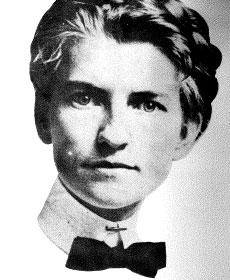 Petrona Royall was one of five children of Robert Venning Royall and Sallie DuPre Royall. She was born on Aug. 27, 1883, in McClellanville. The family later moved to Mount Pleasant, where she attended Mount Pleasant Academy. She graduated from Memminger Normal School in Charleston, a school that taught young women to be teachers. After graduation she taught for two years at Mount Pleasant Academy.
Petrona Royall was one of five children of Robert Venning Royall and Sallie DuPre Royall. She was born on Aug. 27, 1883, in McClellanville. The family later moved to Mount Pleasant, where she attended Mount Pleasant Academy. She graduated from Memminger Normal School in Charleston, a school that taught young women to be teachers. After graduation she taught for two years at Mount Pleasant Academy.
She married William Whilden McIver in 1906. Early in their marriage, the couple lived in Sumter but returned to Mount Pleasant and made their home in the historic “Hibben House.” The oldest house in Mount Pleasant, it was once owned by her great-great-grandfather, James Hibben. The couple had two daughters, Julia and Sarah (Mrs. M. John Townsend Jr.).
Her life was steeped in history, and her works include church records and genealogy. Her book, “History of Mount Pleasant,” was published in 1960 at the request of Mayor Francis Coleman to record the town’s history. Ten years later, Mayor G. Magrath Darby asked that it be included in the celebration of South Carolina’s tercentennial. “Miss Petie,” as she was affectionately known, complied with a rewrite and update. She was in her 80s at the time. She died on Christmas day in 1973 at the age of 90 and is buried in Christ Church Cemetery.
John Charles “J.C. ” Long
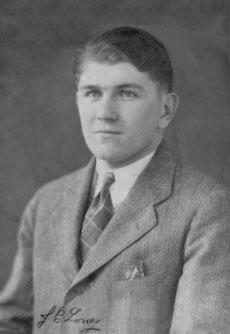 In 1931, at the age of 28, J.C. Long was one of the youngest men to be elected to the South Carolina Senate. Born in Pensacola, Florida, in 1903, he moved with his family to Mount Pleasant when he was 15. After graduating from the High School of Charleston, he studied law at the University of South Carolina, where he was captain of the football team and also played baseball and basketball. He was admitted to the state bar in 1925 and joined the firm of Logan and Grace in Charleston – same Grace that the old Cooper River Bridge was named after. He later had his own law practice and was one of leading personal injury lawyers in his day. It was said he could turn a whole courtroom into tears, including the presiding judge. In 1933, he was elected to a second senatorial term and was on a number of committees. He lost a third bid for office in 1934. During this time, he was active in the Charleston political arena and helped establish the first free library, as well as a hospital for black residents.
In 1931, at the age of 28, J.C. Long was one of the youngest men to be elected to the South Carolina Senate. Born in Pensacola, Florida, in 1903, he moved with his family to Mount Pleasant when he was 15. After graduating from the High School of Charleston, he studied law at the University of South Carolina, where he was captain of the football team and also played baseball and basketball. He was admitted to the state bar in 1925 and joined the firm of Logan and Grace in Charleston – same Grace that the old Cooper River Bridge was named after. He later had his own law practice and was one of leading personal injury lawyers in his day. It was said he could turn a whole courtroom into tears, including the presiding judge. In 1933, he was elected to a second senatorial term and was on a number of committees. He lost a third bid for office in 1934. During this time, he was active in the Charleston political arena and helped establish the first free library, as well as a hospital for black residents.
During the 1930s, thanks to programs made possible by the Works Progress Administration, Long entered into the real estate development industry with his brother Leonard. When he purchased the Isle of Palms and established the Beach Company in 1945, he resurrected the former island resort by building simple cinder block homes –“affordable to all.” In 1933, Long married Alberta Sottile, whose family controlled the amusement industry in Charleston through its many movie theaters. The couple had two daughters, Joyce, who married Dr. Charles Darby Jr., and Mary Ellen, who married Charles Way Jr. J. C. built an 11,000-square-foot mansion on 400 acres of Seaside Farms in 1950, which was outside the Mount Pleasant town limits at the time). The home, designed by Augustine F. Constantine, was made of 65,000 English bricks. In addition to a nursery for oak trees, both Hereford and Guernsey cattle were raised on 150 acres. During the summer, the Longs hosted camps for local children. Many family members still live on the old estate.
Long was active in a long list of local organizations and was a special circuit judge and president of the Charleston County Bar association. He obtained a number of patents including the Long baseball scoreboard.
Long died in 1984, having been confined to a wheelchair for the last years of his life due to a back injury. Although a member of the Unitarian Church, he is buried in St. Lawrence Cemetery in Charleston.
Gordon Magrath Darby Jr.
Newcomers to Mount Pleasant might not realize that the street that runs between Highway 17 and Coleman Boulevard was named for a former mayor of Mount Pleasant, G. Magrath Darby. He rarely used his first name, Gordon, and his middle name is usually pronounced “McGraw,” but, to his friends, he was “Groggy.” He served as mayor for 16 years, from 1960 to 1976. Only one other mayor served as long – Robert Venning Royall.
The Census of 1900 gives a bit of interesting family history. His great-grandfather was William K. Darby, born in 1846, who lived with eight other family members on Rutledge Avenue in Charleston. The household consisted of his son, Gordon M., born in 1875, and his grandson, Gordon Jr., born in 1899. Darby was born in 1929 and listed as “Gordon W. Darby III” on the 1930 Census when the family was living on Bennett Street in Mount Pleasant. His father’s occupation was listed as proprietor – auto repair shop. At some point, he became “Jr.,” and he followed his father into working at the Mount Pleasant Boatyard, located on Shem Creek. As a young man on the creek, Darby built and repaired wooden rowboats and formulated his lifelong love of all things nautical. He attended Moultrie High School and Clemson University and raised his family on Mary Street in the Old Village.
During his tenure as mayor, Darby witnessed Mount Pleasant grow in size and population due in part to the opening of the second Cooper River Bridge in 1967 and the annexation of new subdivisions, including more than 800 acres from Snee Farm. The population in 1960 was a little over 5,000; 20 years later, the population was more than 14,000. When he assumed office, the town budget was $62,000 and consisted of one paid policeman and two paid firemen. By the time he left office, the budget had soared to $500,000, and each department boasted five paid members. During his tenure, a new town hall was built in James P. Edwards Park in the Old Village but was later destroyed by Hurricane Hugo in 1989. In 1991, the old Berkeley County Courthouse in the Old Village was named the Darby Building in his honor.
After leaving office, Darby never sought another political position. One of his proudest achievements was the creation of the Charleston Marine Institute, an alternate school for troubled boys, which, in addition to academics, stressed nautical subjects such as boat maintenance, scuba diving and shrimping. The school no longer exists.
Darby died of heart complications in July 2003. His wife, Sarah, and three sons, Edward, Kirkland and Gordon, survived him.
John Joseph Dodds Jr.
A visitor to Mount Pleasant recently observed, “All the streets have two names.” Yes, many do. As the town annexed new lands, new streets were named to honor local residents who were instrumental in its growth. The frontage roads that parallel Route 17 are named for former Mayor Johnnie Dodds, who was a strong proponent of “quality” growth. Under his tenure, from 1976 to 1986, the town created its first zoning ordinances and a land-use master plan.
Dodds was born in 1918 on State Street in Charleston, the third of the eight children of Irish immigrants John and Loretta Hennessy Dodds. As a boy, he sold newspapers and peanuts at the foot of Cumberland Street, where the ferry to Mount Pleasant docked. He graduated from Bishop England High School and dreamed of a baseball career. He played some ball in Durham and signed a contract with the Cincinnati Reds, but homesickness brought him back to Charleston. He traveled the Southeast as a semi-professional with the Charleston City League. In 2009, he was inducted into the Charleston Baseball Hall of Fame.
Dodds began working at the Charleston Naval Base in 1938 and then was drafted into the Navy during World War II. In 1948, he married Florine Gonnells, and the couple made their home in Mount Pleasant, where they raised four daughters, Cathy Joyner, Carolyn Nelson, Marilyn Davey and Joanie Boyd, and two sons, Johnnie and Robert. Baseball continued to be a part of his life; he helped found the Mount Pleasant Youth Recreation League and coached in the program. Today, the John Dodds Jr. Dixie Field on Center Street bears his name.
Following his retirement from the naval shipyard, he served two terms as Mount Pleasant’s mayor and continued to be active in the community. He was especially interested in helping the elderly, the homeless and young people. He was a strong supporter of education and created the Mount Pleasant Scholarship Foundation, which helped many students attend college, a privilege he was denied.
Dodds died in 2010 at the age of 91. He was buried from Christ Our King Catholic Church, where he was an active member. He rests in Mount Pleasant Memorial Gardens.
Dr. Richard D. Porcher Jr.
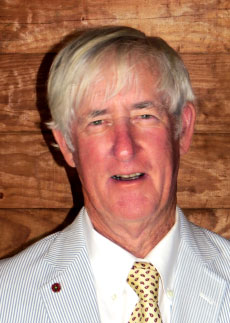 Dr, Richard D. Porcher Jr., professor emeritus in the Biology Department at The Citadel, now resides in Mount Pleasant but stresses that he is descended from the Berkeley County Porchers, not those who settled in Christ Church Parish in 1859. The first Porcher, Issac, a Huguenot and medical doctor, was forced to flee his native France with his family following the Revocation of the Edict of Nantes. After first seeking refuge in England, the family arrived in Carolina and settled in Berkeley County in 1685. Indigo, rice and Santee long-staple cotton were grown on the 17 plantations once owned by the Porcher family. They were flooded by Lake Moultrie in the 1940s.
Dr, Richard D. Porcher Jr., professor emeritus in the Biology Department at The Citadel, now resides in Mount Pleasant but stresses that he is descended from the Berkeley County Porchers, not those who settled in Christ Church Parish in 1859. The first Porcher, Issac, a Huguenot and medical doctor, was forced to flee his native France with his family following the Revocation of the Edict of Nantes. After first seeking refuge in England, the family arrived in Carolina and settled in Berkeley County in 1685. Indigo, rice and Santee long-staple cotton were grown on the 17 plantations once owned by the Porcher family. They were flooded by Lake Moultrie in the 1940s.
Dr. Porcher, who was born in 1939, grew up in Pinopolis and attended Berkeley High School prior to enrolling at the College of Charleston. As a graduate student at the University of South Carolina, a professor, Dr. Batson, introduced the young zoology student to his illustrious ancestors. His great- grandfather married Maria C. Ravenel, the half sister of eminent field botanist Henry William Ravenel. The Ravenels were also prominent Huguenot descendants. Another distant cousin, Francis Payre Porcher, was both a physician and botanist. Ignited by his new interest, Porcher switched his major and earned his PhD in field botany.
Prior to enrolling at USC, Porcher taught at North Charleston High School and then at Vorhees College in Demark, South Carolina, from 1967 to 1970. In the fall of 1970, he began a 33-year career teaching at The Citadel. He retired in 2003.
During his career Dr. Porcher was recognized as an expert on the flora of South Carolina. He has authored and co-authored six books and numerous articles.
Dr. Porcher has lived in Mount Pleasant since 1970. He has two children and three grandchildren. Although retired, he is hardly inactive. He is currently working on two books while maintaining an active lecture circuit. One of his current projects includes the history of the Middle St. John’s Parish, whose homes, lands, churches and cemeteries lie under Lake Moultrie. He is especially interested in the African-American communities of that area, whose history has not been documented.
All text and research by Pamela Gabriel.

Thank you Pamela Gabriel for such an interesting article about the Icons of Mount Pleasant. I am new to living here after living most of the last 20 years in Phoenix , AZ. The history is fascinating. As an artist I sketched and painteed all over the West, and now am learning where to sketch here. I am so appreciative of the historic signs when I run across them. I am thrilled to get the little extra details you added, like I’on being roommate to John C. Calhoun at Yale. I need a good excuse to illustrate this wonderful past, so if you ever write a book, maybe we could collaborate.
Claudia
http://www.claudiahartley.com
http://www.artmeccaofcharleston.com
http://www.bonnerdavid.com
at the end of th ewonderful article it says to log on to this website and see more people from this period. Where? I cannot find “more”.
Good Day
I have a few questions:
1. I live in Whitehall Terrace but have not seen a copy of the Magazine in several years. Where’s it being dropped off?
2. How can I get an article printed in the Magazine to recognize one who has been instrumental in accomplishing much in the local community, East of the Cooper?
I enjoyed reading the history of Mt. Pleasant residents. I am the granddaughter of Jennie Moore and wanted to let you know that her maiden name is misspelled. It should be Edmondston,
Carolina thank you, I’ve changed her maiden name to Edmonston. I did a little digging around and saw indications that her middle name was possibly not Verdie. Can you say one way or the other?